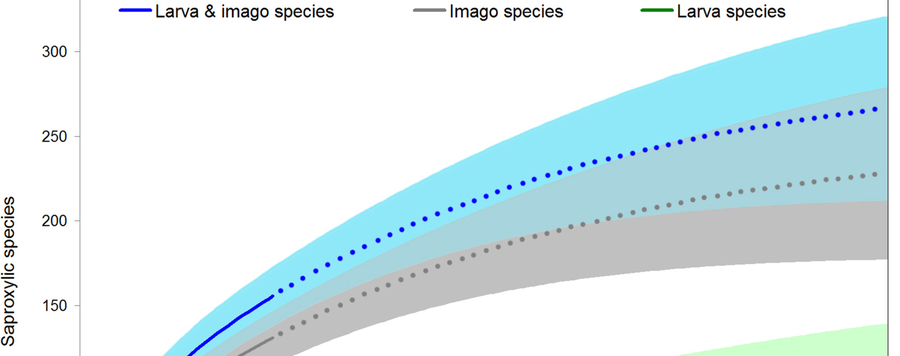
Does monitoring of saproxylic beetles benefit from inclusion of larvae?
Saproxylic beetles (Coleoptera) are important for biomonitoring to evaluate the state of ecological conservation of forest ecosystems. However, beetle larvae are rarely considered due to their difficult identification.
Here, we evaluate the use of beetle larvae, alongside adult specimens, for monitoring. Forty sifting samples from deadwood structures were analysed from eight different forest sites near Münster (Germany). Larvae were identified by matching with DNA sequences (COI) of identified adults (from GBOL database/BOLD) using various standard DNA-based species delimitation methods.
Our main objective was to figure out whether larvae can be sampled, barcoded, and identified successfully on a larger scale, and whether the inclusion of larval data improved the ecological and taxonomic results of the survey.
Altogether we found 129 species as larvae and 313 as imagos. Four larva species could not be identified to species level because of a lack of a match with adult reference sequences. Among all sifting samples, 41% of the species recorded as larva were not found as imago.
The inclusion of larvae increased the expected species richness and generated a more precise differentiation between the sites in respect of saproxylic species richness and assemblage composition. Moreover, almost 30% of identified larvae are not morphologically described, so they cannot be identified morphologically.
This study showed that the use of larvae could considerably improve the accuracy of ecological surveys, particularly at meso- and microhabitat level, while for higher level, geographical scales sequencing and sampling efforts would be at the moment excessive.






